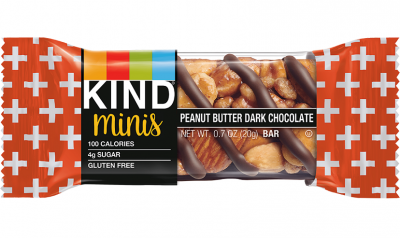What is ‘healthy’? FDA proposes new definition as added sugar, not fat, becomes nutritional bogeyman

Rather than requiring minimum amounts of nutrients to encourage, which critics say has tended to encourage fortified junk food rather than a switch to a healthier dietary pattern, the proposed rule reflects “current nutrition science and the Dietary Guidelines” by requiring foods to contain a certain amount of food (a ‘food group equivalent’) from at least one of a list of recommended food groups (e.g., ½ cup of fruit or ¾ cup of dairy) to be labeled ‘healthy.’
According to the agency, “FDA is concerned that including criteria for nutrients to encourage could spur fortification to allow foods that are low in saturated fat, sodium, and added sugars to qualify for the ‘healthy’ claim, despite these foods not contributing to a meaningful amount of a food group (e.g., white bread fortified with calcium).
"We tentatively conclude that using food groups* to encourage as the criteria for 'healthy' rather than a limited set of nutrients, would better identify foods with the nutrient content that may help consumers maintain healthy dietary practices, consistent with current nutrition science and federal dietary guidance."
Limits on sodium, saturated fat, added sugars
It also proposes limits on sodium and saturated fat (which are already included in the current criteria), along with adding a limit on added sugars (which is new).
For sodium, the proposal lowers the criteria from 480mg per 'Reference Amounts Customarily Consumed' (RACC) to <230 mg per RACC for individual foods to be labeled ‘healthy.’
For saturated fat, the FDA is proposing a baseline limit of 5% of the daily value per RACC (≤ 1 g) for most foods, but 10% DV for dairy products, game meats, seafood, and eggs; and 20% of total fat for oils and oil-based spreads and dressings (which would exclude high saturated fat oils such as coconut oil from making healthy claims). It is also “considering an approach using a ratio of saturated fat to total fat.” The limit for total fat has been removed.
For added sugars - which have a daily value of 50g – the FDA is proposing a pretty low baseline value of under 5% of the daily value per RACC (ie. under 2.5g), but says it is “also proposing to adjust the baseline values for added sugars as warranted, based on specific considerations of the different food groups and subgroups.”
Exceptions: Water, whole fruits, veggies
Selected foods that may not meet the above criteria, such as bottled water, eggs, nuts and seeds, whole fruits and vegetables, will also be permitted to make ‘healthy’ claims.
It is also seeking comment on the “eligibility of calorie-free beverages, coffee, and tea to bear the ‘healthy’ claim.”
Record keeping
The proposed rule requires that each manufacturer of a food that bears the implied nutrient content claim ‘healthy’ must “make and keep written records to verify that the food meets the food group equivalent requirements when it is not apparent from the label of the food.”
Examples of records include analyses of databases, recipes, formulations, information from recipes or formulations, or batch records, says the FDA.
Healthy symbol
As it revises its definition, the FDA is also researching the effectiveness of a symbol that manufacturers could use on the front of the pack to show that their product meets the definition of the 'healthy' claim.
Having a standardized graphic to show that a food qualifies for the 'healthy' claim would further support the FDA’s goal of helping consumers more easily identify packaged food products that help them build healthy eating patterns, said the agency.
Where does plant-based fit in?
To “support the availability of nondairy choices for individuals who are lactose intolerant or allergic to dairy or choose not to consume dairy,” says the FDA, “plant-based milk alternatives and plant-based yogurt alternatives whose overall nutritional content is similar to dairy (e.g., provide similar amounts of protein, calcium, potassium, magnesium, vitamin D, and vitamin A) and are used as alternatives to milk and yogurt would be evaluated against the dairy criteria for the purposes of the ‘healthy’ nutrient content claim.”
"The FDA deserves applause for requiring foods labeled “Healthy” to contain recognizable food and also to be below some cut point on added sugar, salt, and saturated fat. This will automatically exclude a lot of ultra-processed products from self-labeling as 'healthy.' The comments will be fun to watch..."
Dr Marion Nestle, Paulette Goddard Professor of Nutrition, Food Studies, and Public Health at New York University
IDFA: Strict limits on added sugar would prevent many 'nutrient dense' flavored milks, yogurts, from making 'healthy' claims
As always with any food labeling rules, the devil is in the detail, and some organizations such as the International Dairy Foods Association have already weighed in with concerns about how this might work in practice.
“The proposed rule sets criteria to require a product to contain the equivalent of at least a ¾ cup serving of dairy product to bear a ‘healthy’ claim, a positive step toward encouraging consumption of dairy.”
However, the 10% DV per RACC limit on saturated fat for dairy products “would prohibit many nutritious dairy products from carrying a ‘healthy’ claim,” claims IDFA, while the low limits for added sugar mean certain flavored milks or yogurts would likely be excluded. “Here, the proposed rule would prohibit a number of nutrient dense dairy products. Moderate levels of added sugars in dairy products increase palatability, thereby encouraging Americans to consume these nutrient-dense foods.”
As for sodium: “IDFA encourages the FDA to revisit this portion of the rule to recognize that cheese is the second highest source of calcium yet contributes less than 4% of the sodium to the diet.”
Corn Refiners Association: FDA needs to spell out what definition covers, and doesn't cover
The Corn Refiners Association welcomed the proposed rule, but urged the FDA to "better serve consumers and make the food industry more transparent by requiring that a brief explanatory statement, such as ‘based on nutrition content only,’ accompany ‘healthy’ claims," given that the public comments submitted to date show that many consumers think healthy refers to everything from the absence of hormones and antibiotics to pesticide residues and preservatives.
*Recommended food groups include vegetables, fruits, dairy, grains, protein foods, as well as oils, which various caveats and qualifications outlined from around p32 of the proposed rule onwards.

How did we get here?
Food labeling rules have historically permitted ‘healthy’ claims on foods with 3g or less total fat and 1g or less saturated fat per serving (excluding fish and meat), with limits on cholesterol and sodium, and minimum requirements for nutrients to encourage (vitamin A, C, calcium, iron, protein, or fiber). There have been no limits on sugar - added or otherwise.
However, the FDA took a fresh look at the definition in 2016 after KIND Snacks challenged a definition of ‘healthy’ that immediately excluded products high in healthy unsaturated fats such as nuts and avocados.
This resulted in guidance permitting ‘healthy’ claims on higher-fat products provided they “have a fat profile makeup of predominantly mono and polyunsaturated fats; or contain at least 10% of the Daily Value (DV) per reference amount customarily consumed (RACC) of potassium or vitamin D.”
The FDA concurrently issued a request for information from stakeholders about use of the term healthy in September 2016, which prompted thousands of conflicting comments, with several commentators queried the value of the exercise altogether.


















